"My Multiply" - Androiid app and Desktop site
With the addition of the multiplication module, the program has had a lot of additions added to it. There is now a keypad for entering the numbers on screen so the user doesn't have to key them in. This was mainly an addition for the app but it has served well for inclusion with the desktop version as well. Rewards are still very basic and involve increasing the interfaces functionality, but those will also change soon. Lastly, the "Division" section is there, but it is really just a copy of the addition module.
View the Prototype
Download Android .APK
(You may need to authorize and allow unknown apps to run on your device)
OLD Prototype Example
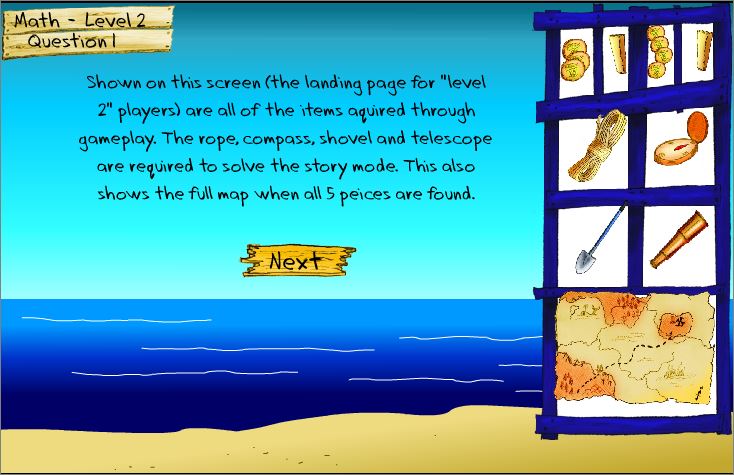
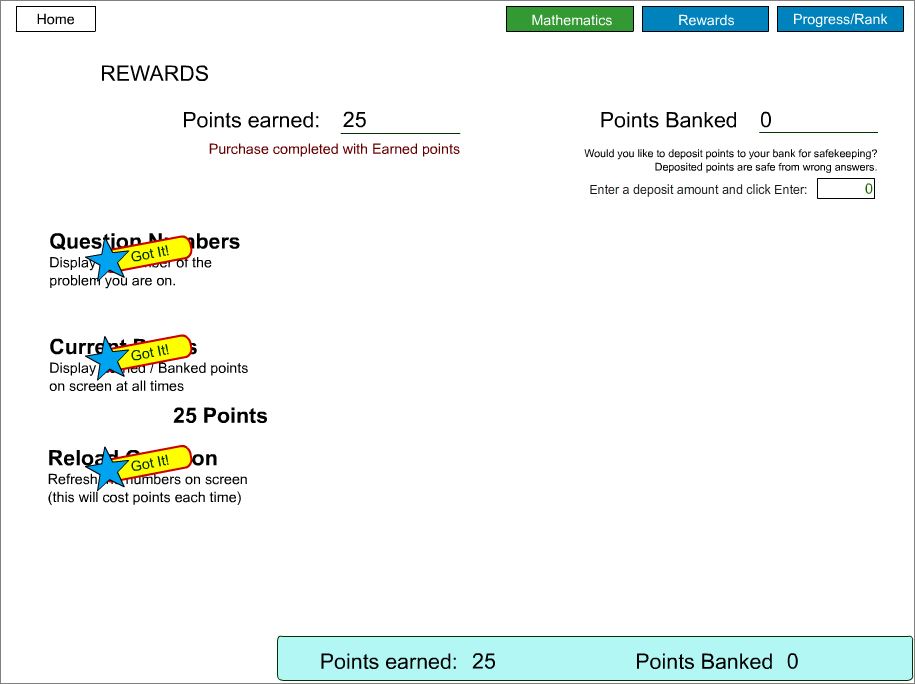
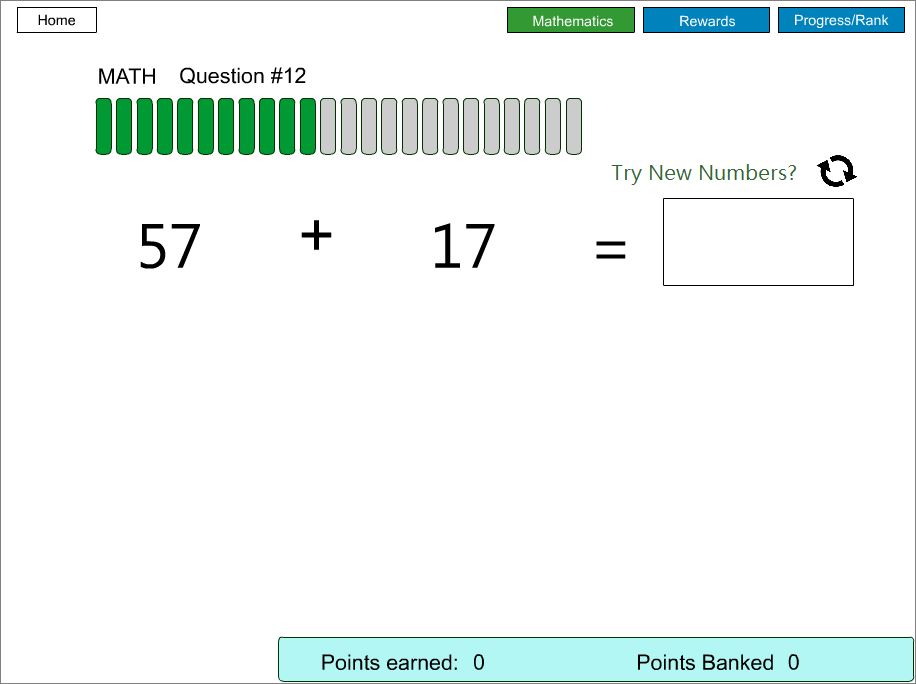 In the Fall of 2012 I was given a final project assignment to design an interface for ITGM 709 in Professor Deshpande's class. This educational interface is a result of that project: Pirate Challenge
In the Fall of 2012 I was given a final project assignment to design an interface for ITGM 709 in Professor Deshpande's class. This educational interface is a result of that project: Pirate Challenge
It is a basic educational interface focused on 1st-2nd graders. The core attempt of the project was an exploration of setting and maintaining variables within a game setting in Flash, however, the byproduct of the project was the educational game play setting.
Using "Pirate Challenge" as the basis of the program for the thesis, I begun development on a low-fi prototype in flash that utilizes random numbers and AS3 to simulate a mathematics exercise. and will be updated as needed. When a major step forward has been accomplished in the prototype development, the prototype will be updated on this external page, and the link to the actual .swf file will be appended to this list:
- beta0.swf - Initial interface
- beta1.swf - Added reward/rank info
- beta1a.swf - (Abandoned) Alteration of Math page
- beta2.swf - Output and trace used for operand error(s) and general debugging
- beta3.swf - First purchase available. Removal of spell/read
- beta4.swf - Updated rewards. Adjusted reward settings
- beta5.swf - Additional purchase. Fixed reward assignment of bugs
Sitemap examples
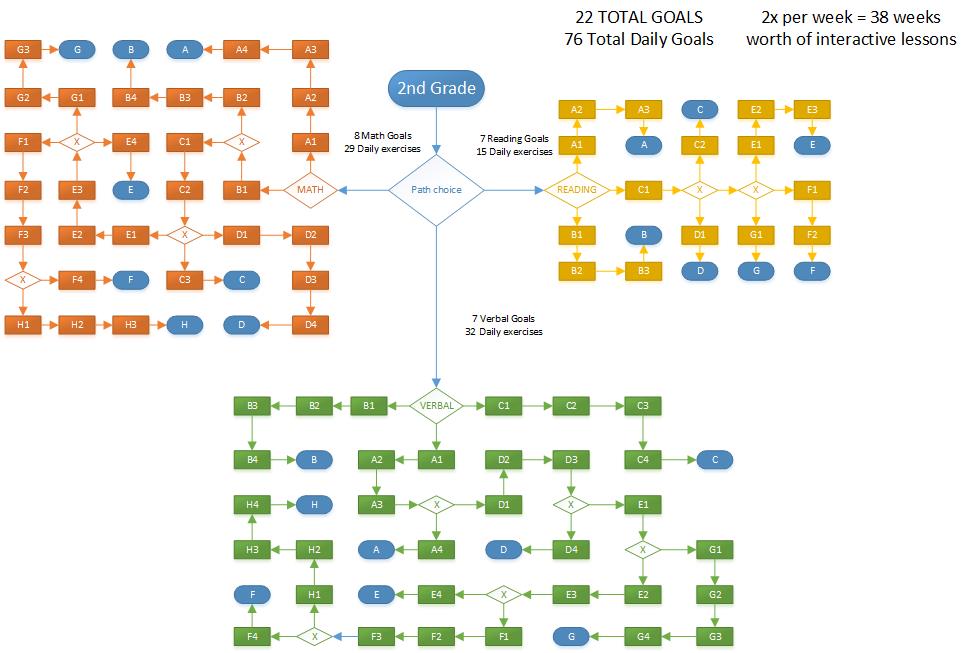
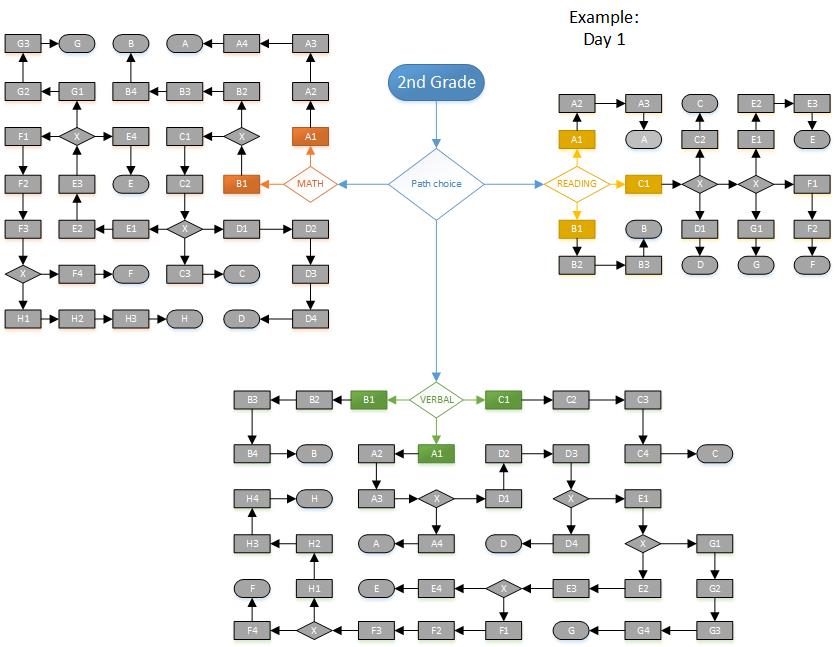
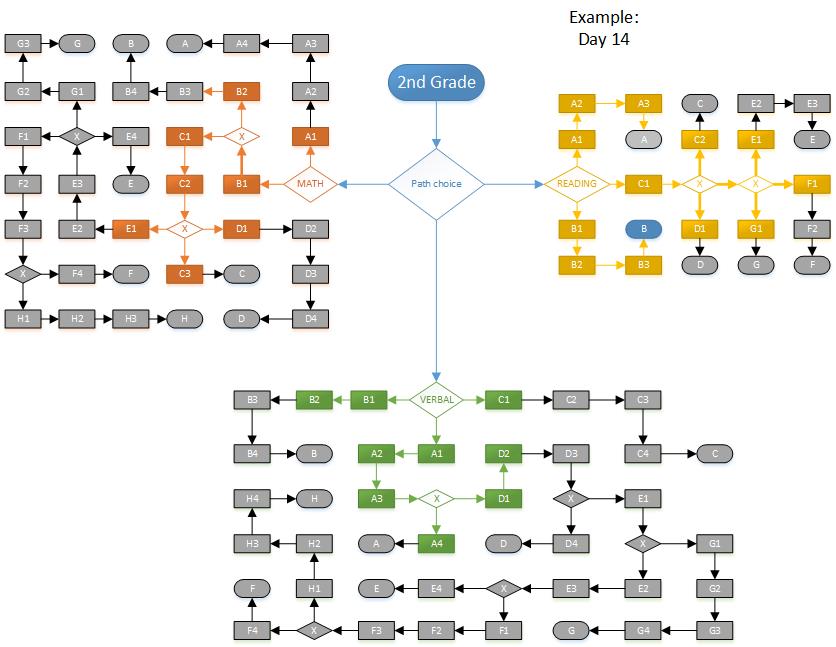 Part of the longevity of the project is in the fact that each day a student would be asked to complete a module within the digital interface. This module would be along a "choose-your-own" path allowing the students to progress through the entire program on their own , and with their own agenda. The caveat being that certain modules would not be available until prerequisite legs are accomplished. For example: if a child has not embarked down an addition and subtraction path, the counting money module, or path, would not be made available as the required addition and subtraction needed for the counting process would not have been learned.
Part of the longevity of the project is in the fact that each day a student would be asked to complete a module within the digital interface. This module would be along a "choose-your-own" path allowing the students to progress through the entire program on their own , and with their own agenda. The caveat being that certain modules would not be available until prerequisite legs are accomplished. For example: if a child has not embarked down an addition and subtraction path, the counting money module, or path, would not be made available as the required addition and subtraction needed for the counting process would not have been learned.
The example is broken into 3 sections (Math, Verbal, Reading) and each of those sections break down into individualized "legs" (A, B, C, D ...). Along each of those paths exist single modules (1, 2, 3, 4...) that need to be completed before the next module and/or path is activated.
A sample "path" has been illustrated in the examples shown to the right. The first screen shows an entire overview of the three primary subjects; math, reading, and vocabulary/grammar ("verbal" as shown in the diagram). The next two examples illustrate a child's possible path through their modules at their pace, starting with the "first" day and then showing a follow up screen shot of 14 days into the program.
At the outset of the program, the child is given possible starting points in each of of the three subject sections. If we follow the Verbal (green) section as an example, the child elected to complete module "B1", which then opened up the opportunity to work on module "B2". The child also selected, and completed, modules "A1", "A2", and "A3". When "A3" was completed a new branch was opened up for leg "D" along with the option to work on module "A4". The child chose to enter into the new section, "D", and completed module "D1" allowing access into "D2".
Analog component - "Pet Store"

As I move forward with the process of developing the game "overlay" for the gamification of the class, I have had a hard time focusing on a theme for the students. In my opinion, there should be some level of a unification with the digital and analog version of the game to tie everything together into a cohesive experience. Points, accolades, rewards, and upgrades earned/purchased through the game should be made available in the digital, and analog versions for the students to use. This is where a gender neutral topic/theme would be important, yet it is difficult to target.
In the above digital example, I used a pirate theme within the module. Though this was a solid theme at the time, I fear that it is not a gender neutral focus to help keep girls and boys both engaged in the subject matter. Pirates do not seem to be universally accepted. A possible better solution would be animals. Animals seem to be universally adored by young people and it is an easy subject with which to work with in the form of enhancements, rewards, bonus items and special gifts.
Lets take the concept idea of a "pet shop" as an example for the theme in the game-play model. If a "pet shop" was the focus of the game rewards and bonus items could relate to purchasing pets and or accessories for those pets. Points/coins/medallions awarded for good behavior, high marks on tests, or cooperation during class time, could be traded in for pet supplies and exotic animals as rewards. In addition to upgrading pets and or their environments, children could be given classroom accolades and earn badges.rewards/ribbons for extra special milestones.
Lets look deeper at what we can surmise in regards to a child:animal relationship, and what other "assumptions" could be focused on:
FACTS
- Pets can have toys, bedding, houses, clothes (?) as upgrades to be purchased
- There are many different species and markings of animals allowing for customization/personalization.
- Feeding, watering, playing with and walking a pet teaches another level of responsibility as an emergent challenge within the game
- Purchasing more exotic animals (Giraffe, Unicorn, Dragon) can add to a desire to achieve better scores/grades
ASSUMPTIONS
- Boy and Girls most likely enjoy playing with animals.
- A variety of animals (dogs, birds, rabbits, cats) could appeal to a wide variety of students.
- Children might enjoy buying virtual pets and toys for these pets
- Owning and trading pets in a game situation might help learning become more fun using enticing goals as rewards.
- Purchasing more exotic animals (Giraffe, Unicorn, Dragon) can add to a desire to achieve better scores/grades
Obviously, this is a sample list that could definitely be expanded upon and refined further, but at this time, the data suggests that there are enough "Facts" and plausible assumptions to make this a safe theme to work with. Rather than get caught up with semantics and beat to death the different ideas of "what to style the game like" I think I will move forward with a pet shop theme for the game. It is straightforward, works for the example, and would provide an understandable concept for individuals to follow.
Reward Outline
A breakdown of possible point distribution for various achievements are shown here. 5 possible games are presented for classroom activities, one for each day of the week. Every participant earns a reward, with 2nd and first place earning slightly larger rewards for their achievements. In addition to these 5 daily game rewards there are individual achievements for the digital modules, as well as daily rewards for tests/quizes taken, attendance, cooperation and assistance.
The "weekly" game's prizes are shown with the 1st, 2nd and 3rd (and down) prize distribution. The teacher could elect to hold all of these prizes for a Friday prize event where children are encouraged to cash in their prizes and claim their rewards. This could build a sense of camaraderie with the students, and also build a team atmosphere as the students choose pets, prizes and rewards and build their menageries together.
